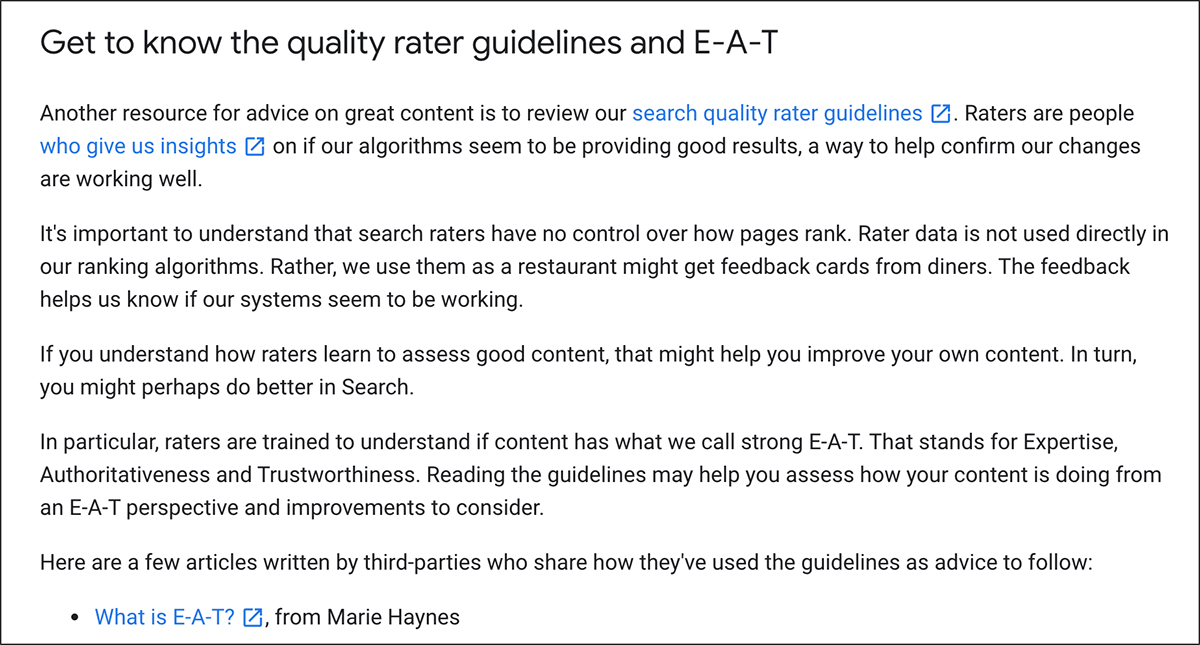Last April, Google announced that it was going to start to reward product reviews that were well-researched, in-depth, and useful for consumers. While this is separate from their regular core updates, it still affects their ranking systems. Quality content is king not just on landing pages and blogs, but also when providing reviews for products.
In Google’s ongoing quest to give the people the best search results possible, they are extending this to product reviews as well. Shoppers like to make informed decisions when purchasing products and not just major items like cars and homes – people like to have that additional peace of mind that comes with positive reviews, when buying any product or contracting any service online.
For now this update only includes English Language websites, but it doesn’t discriminate as far as what type of product is on review. This means, it’s not just eCommerce product reviews, but all types of reviews including product “round-ups,” single product reviews, as well as business services reviews. Google is not only sorting through landing pages, if you publish reviews via a blog – the powers that be will be reviewing that too.
Obviously brands or businesses that do not publish product or service reviews have not been affected by this update. We have several tips for SMEs on how to improve their content and their chances of getting on those coveted first few pages of Google’s search results.
Google Provides Nine Questions to Consider When Writing a Product Review

Google doesn’t bother providing marketers with information about how this algorithm update technically works or specifically what on-page SEO ranking factors that they are using as signals. However, they have been so kind as to give us some useful questions to keep in mind when writing product reviews.
Google’s main goal has always been and will always be to provide the best content to its users by using the EAT principles we have discussed previously. Reviews are no different – whether for a product or a service – the review itself must be provided by an expert or enthusiast of the subject itself, it must be authoritative and well-researched and it must come from a trustworthy source.
Here is the list of questions that Google has provided:
Do your reviews:
- Express expert knowledge about products where appropriate?
- Show what the product is like physically, or how it is used, with unique content beyond what’s provided by the manufacturer?
- Provide quantitative measurements about how a product measures up in various categories of performance?
- Explain what sets a product apart from its competitors?
- Cover comparable products to consider, or explain which products might be best for certain uses or circumstances?
- Discuss the benefits and drawbacks of a particular product, based on research into it?
- Describe how a product has evolved from previous models or releases to provide improvements, address issues, or otherwise help users in making a purchase decision?
- Identify key decision-making factors for the product’s category and how the product performs in those areas? For example, a car review might determine that fuel economy, safety, and handling are key decision-making factors and rate performance in those areas.
- Describe key choices in how a product has been designed and their effect on the users beyond what the manufacturer says?
If your reviews answer the questions above, then you have a better chance of optimizing your SEO ranking factors.
Additional SEO tips for Providing Product Information for Shoppers

Regardless of whether your content counts as a review, providing the best product information for your shoppers is still best practice if you want to make it on the first few pages of google. Local search is everything for SMEs and the competition is fierce. Providing your consumers with the best possible content is a sure-fire way to get in Google’s good graces.
- Provide product IDs (GTINs or SKUs)
- Use exact product names
- Provide quality photos
- Use structured data/schema
- Be discriminative with backlinks
- Use SEO product-review keywords
Focus on the EAT principles

Source: developers.google.com
The tech giant synonymous with search continues to make strides that ensure that consumers get the information they need to make wise decisions – whether it is for a purchase or a service – or even if they are looking up how to get a stain out of the carpet or how to change a tire. SME should always focus on the EAT principles while creating content for both their website and their off-site marketing channels.
57% of people turn to Google to read product/service reviews before making purchases or deciding on a service. 76% of consumers say they trust the reviews they read online as much as they do personal, word-of-mouth recommendations. These statistics show just how important it is to ensure that your product reviews at least meet, if not exceed Google’s standards.
Here at Fortune Web Marketing, our team of content strategists excel at inbound marketing. We have years of experience of helping SMEs attract their ideal customers by giving them the tools they need to rock the web. Whether you are looking to improve your eCommerce site or simply come up with a winning content strategy for your marketing goals, we’ve got a solution for you.





